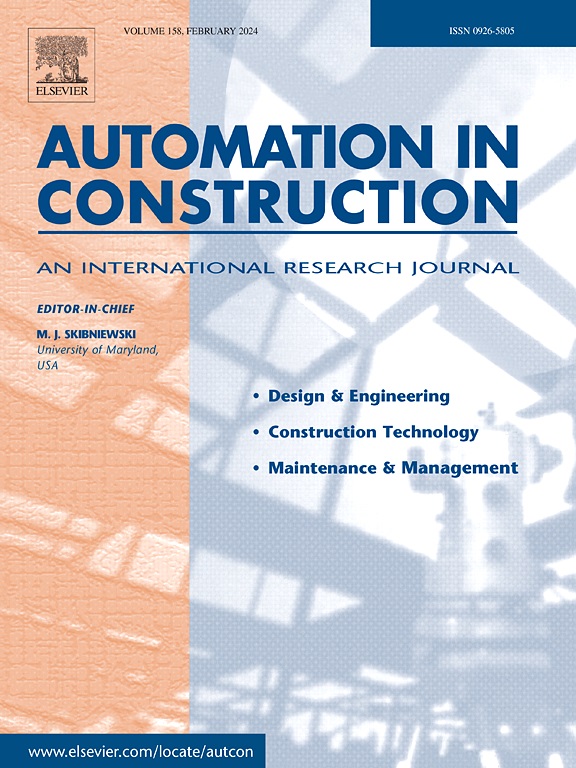Multi-equipment collaborative optimization scheduling for intelligent construction scene
IF 9.6
1区 工程技术
Q1 CONSTRUCTION & BUILDING TECHNOLOGY
引用次数: 0
Abstract
How to realize the efficient scheduling of construction equipment and ensure the construction quality is the key problem that restricts the development of intelligent construction technology. This paper proposes a multi-equipment collaborative optimization scheduling method for intelligent construction scene. Firstly, a logical model of intelligent construction scene is proposed, and the characteristics and requirements of construction in intelligent construction scene are clarified. Considering the relationship between construction processes and the control requirements of construction quality, an intelligent planning model of multi-equipment collaborative scheduling scheme is established. Aiming at the problem of equipment scheduling analysis, an improved non-dominant classification genetic algorithm (NSGA-II) is proposed. According to the solution results of the improved NSGA-II, the data mapping relationship between the scheduling scheme and the construction completion time and construction energy consumption is established. The verification and application of the proposed method are carried out by a cable truss structure experimental model.
智能施工场景的多设备协同优化调度
如何实现施工设备的高效调度,保证施工质量,是制约智能施工技术发展的关键问题。本文提出了一种面向智能化施工场景的多设备协同优化调度方法。首先,提出了智能化施工场景的逻辑模型,明确了智能化施工场景中施工的特点和要求。考虑到施工工序之间的关系和施工质量的控制要求,建立了多设备协同调度方案的智能规划模型。针对设备调度分析问题,提出了改进的非优势分类遗传算法(NSGA-II)。根据改进的 NSGA-II 的求解结果,建立了调度方案与施工完成时间和施工能耗之间的数据映射关系。通过索桁架结构实验模型对所提方法进行了验证和应用。
本文章由计算机程序翻译,如有差异,请以英文原文为准。
求助全文
约1分钟内获得全文
求助全文
来源期刊

Automation in Construction
工程技术-工程:土木
CiteScore
19.20
自引率
16.50%
发文量
563
审稿时长
8.5 months
期刊介绍:
Automation in Construction is an international journal that focuses on publishing original research papers related to the use of Information Technologies in various aspects of the construction industry. The journal covers topics such as design, engineering, construction technologies, and the maintenance and management of constructed facilities.
The scope of Automation in Construction is extensive and covers all stages of the construction life cycle. This includes initial planning and design, construction of the facility, operation and maintenance, as well as the eventual dismantling and recycling of buildings and engineering structures.
 求助内容:
求助内容: 应助结果提醒方式:
应助结果提醒方式:


